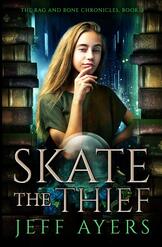|
|
“Rainbow in the Dark” has got a whole chapter under its belt, silly thing that it is. I’ll be looking back at the manuscript I plan to shop around before the next blog post.
There’s an adage in writing circles that is always worth remembering: show, don’t tell. It’s an axiom that reminds writers that we shouldn’t use the narrator to just tell everything to the reader. If you want the reader to understand what a character is like, show the reader. Imagine if, when Darth Vader first shows up onscreen, a narration crawl shows up to tell the audience how bad of a dude he is. Totally ineffective! Instead, the movie shows us how nasty he is, from his appearance to his actions. Everything about him reveals how cruel and dangerous he is, and nobody has to tell us that. Characterization should be the same in good novel writing. Having said that, it’s hard to do. Whenever I’ve got a character in mind, the person is a short list of landmarks. He’s got a bad leg. She’s out for revenge. He can’t make friends and it makes him lonely. She has trust issues. So the challenge for me as a writer is to take these characteristics and turn them into events, which is turn reveal the character for who they are. It’s a complex series of steps, and it takes up a bulk of the creative labor during both the drafting and editing stages. If plot were simply a matter of “Thing A happens, then thing B happens, then …” and so on, anybody could write well without much effort. To make a story good, though, a writer has to work to make his characters feel real. To make characters feel real, you have to show them to be real. Telling won’t cut it. Write your story! -J. E. Ayers
0 Comments
|
AuthorJeff Ayers writes books that are pretty good. Archives
April 2024
Categories |



 RSS Feed
RSS Feed
